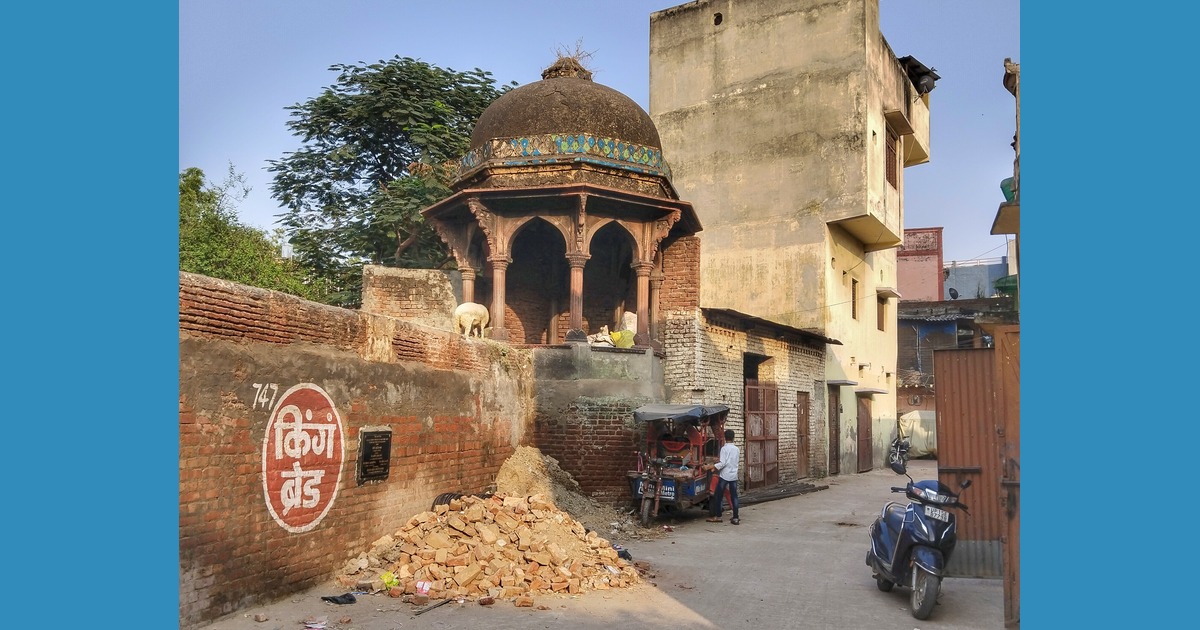
A Stitch in Time: Exploring the Exquisite Craft of Chikankari Embroidery
Originating in the historical city of Lucknow, Chikankari embroidery has a special place in the hearts of fashion enthusiasts across the globe. This delicate art form has transcended generations, captivating hearts with its timeless elegance and intricate designs. Central to the allure of Chikankari are the myriad stitches that adorn its fabric, each telling a story of tradition, skill, and exquisite craftsmanship.
Origins:
Chikankari embroidery traces its roots back to the Mughal era, when it flourished under the patronage of emperors and nobles in the royal courts of Lucknow. Legend has it that Chikankari was introduced to India by Nur Jehan, the wife of Mughal Emperor Jahangir, who was known for her love of fine textiles and intricate embroidery. Inspired by Persian and Central Asian techniques, Chikankari quickly gained popularity among the elite classes of society, becoming synonymous with luxury, refinement, and sophistication.
The word "Chikankari" itself is derived from the Persian word "chikan," which means needlework. Traditionally practiced by skilled artisans known as "chikankars," this art form involves hand-embroidering delicate patterns onto sheer fabrics such as muslin, cotton, and chiffon, using fine cotton or silk threads. Over the centuries, Chikankari has evolved and adapted to changing tastes and influences, but its essence remains deeply rooted in the rich cultural heritage of India.
Types of Stitches in Chikankari Embroidery:
There are 32 different types of stitches in Chikankari embroidery. However, five of them -- phanda, jaali, hool, bhakhiya and tepchi -- are the most prominent and commonly used. Join us as we delve deeper into the different types of stitches that make Chikankari clothes a true masterpiece.
- Phanda Stitch (French Knot Stitch): Phanda, or French knot stitch, adds a touch of whimsy and playfulness to Chikankari embroidery. This stitch involves creating small, tightly wound knots with the embroidery thread, forming a dense cluster of raised dots on the fabric. Phanda stitch is often used to embellish floral motifs and create intricate patterns, adding a sense of tactile beauty to the design.
- Bakhiya Stitch (Shadow Work): Bakhiya, or shadow work, is perhaps the most iconic stitch in Chikankari embroidery. This technique involves creating a contrasting shadow effect by outlining the design on one side of the fabric and filling it in with tiny, diagonal stitches on the reverse side. The result is a mesmerizing play of light and shadow, lending depth and dimension to the motifs. Bakhiya is often used to embellish floral patterns, giving them a delicate, ethereal quality.
- Jaal Stitch (Lattice Stitch): Jaal stitch, a hallmark of Chikankari embroidery, epitomizes meticulous craftsmanship. Unlike other stitches, the thread never pierces through the fabric, maintaining the garment's integrity from front to back. Here, warp and weft threads are delicately separated, creating a lattice-like pattern. Minute buttonhole stitches are then carefully inserted, weaving a mesmerizing tapestry of intricate designs. This technique not only adds depth and texture but also ensures the back of the garment mirrors the flawless beauty of its front.
- Hool Stitch (Eyelet Stitch): Hool, or eyelet stitch, adds a touch of femininity and grace to Chikankari embroidery. Characterized by small, round holes surrounded by intricate threadwork, this stitch is commonly used to create floral motifs and decorative borders. The airy, open design of Hool stitch makes it perfect for crafting lightweight garments that exude charm and sophistication.
- Tepchi Stitch (Running Stitch): As the foundation of Chikankari embroidery, the Tepchi stitch is characterised by its simplicity and versatility. Consisting of straight, evenly spaced stitches, this basic stitch forms the framework upon which intricate patterns are built. Traditionally, Tepchi is used for outlining motifs and creating geometric designs, adding a subtle elegance to the fabric.
Through its intricate stitches and exquisite designs, Chikankari embroidery adds its own unique charm to the fabric, transforming it into a masterpiece that celebrates the timeless beauty of Indian craftsmanship. So the next time you wear a Chikankari garment, take a moment to appreciate the skill and dedication that went into creating it, stitch by stitch, a labour of love that truly stands the test of time.
Popular Categories
Read More Articles
Travel and Tourism
Meerut’s vanishing heritage: Why its mughal treasures are crumbling away by Mohammed M. Raza November 19, 2025Business
Hafele Valeriya Dishwasher: The New Standard in Kitchen Hygiene by Awadh 360° Desk November 14, 2025Entertainment
Banaras gave me the notes, Bhatkhande polished them: Bhojpuri singer Sarita Tiwari by Awadh 360° Desk November 10, 2025Travel and Tourism
Statue of Unity Sets New Tourist Footfall Record as PM Modi Hails Vallabhbhai Patel's Legacy by Awadh 360° Desk October 31, 2025



